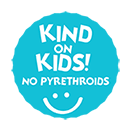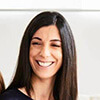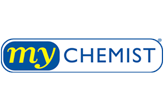NitWits Complete Head Lice Fact Sheet
How do you know if your child has lice? In this head lice fact sheet, we explain what head lice are, where they come from and what causes them. We also explain the signs and symptoms of head lice such as an itchy scalp and provide up to date information on the best head lice treatments and prevention advice below.
What are head lice and nits?
Get the facts!
Head lice are a very common problem, especially for kids. They are not dangerous, do not carry diseases and are not a sign of poor hygiene. They are however contagious, annoying, frustrating, embarrassing and can sometimes be difficult to get rid of. When your family has head lice and you want to get rid of them fast, knowing what the facts are can help you with the looking for signs and symptoms, identifying treatments and future head lice prevention.
FACT 1
Head lice are blood-sucking insects
The Head Louse is a tiny wingless, parasitic insect with six legs that lives on the human scalp. Head Lice (plural for Louse) crawl all over the scalp, gripping hair shafts as they move quickly. They can only survive on human blood and need to feed from the scalp 3 to 4 times a day. The lice bite into the scalp and extract the blood directly from the bite.
FACT 2
Head lice operate as a family
The head lice family consists of nits, eggs and lice: the nit (empty egg casing), head lice egg, the nymph (adolescent louse) and the adult louse. There are female and male lice and head lice do reproduce sexually. Read more about head lice families.
FACT 3
Head lice are worldwide
Head lice are common year-round and right around the world. Although, head lice infestations can live on adults and children alike, 95% of
all nit infestations are picked up at school*
*From a recent NitWits survey.
FACT 4
Is head lice a sign of bad hygiene?
Head lice are not dangerous, do not carry diseases and are not a sign of poor hygiene. In fact, head lice don’t much care whether the hair is clean or dirty.
FACT 5
Can head lice fly or jump?
Head lice do not have wings or jumping legs, so cannot hop, jump or fly, nor can they swim – but they do crawl at exceptional speeds and can swing from hair to hair! This is how head lice are usually transferred, by crawling from one head to another – like in a playground, when kids are playing together and bump heads while rolling on a lawn.
FACT 6
What is the life cycle of head lice?
The lifespan of an individual louse is just thirty-five days. However, within this time the louse can reproduce and create a large family of lice that continue the head lice life cycle. The female louse can lay between 50 - 150 eggs in her lifetime. Lice lay eggs on hair shafts close to the scalp, where the temperature is perfect for keeping them warm until they hatch. Lice eggs will hatch within 7-10 days after being laid…and so the head lice lifecycle continues!
FACT 7
Can I see head lice?
Although head lice are very small, lice can be seen by the naked eye. A nymph, an adolescent louse is between 1 and 2 millimetres in length, light brown in colour and grows to around 2 to 3 millimetres as it develops into an adult louse which are usually a dark brown in colour. Unless the infestation is heavy, it's more common to see nits in a child’s hair than it is to see live lice crawling on the scalp.
FACT 8
Can I see nits or head lice eggs?
Head lice eggs often called ‘nits’, are oval in shape and 0.5 -1 mm in length. When laid, they are a yellow / white colour but can turn to a tan or coffee like colour as the embryo grows. Once hatched, the shell (Nit) appears white or clear and stays firmly attached to the hair shaft. Nits look sort of like dandruff, only they can’t be removed by brushing or shaking them off.
FACT 9
How do head lice spread?
Lice are highly contagious and can spread quickly from person to person without discrimination, especially in schools, childcare centres, camps and sports activities where there are groups of children in close contact. They are spread mainly through head to head contact. Head lice travel close to the hair and hair accessories like scarfs, hats, brushes and combs, so when these are shared they can transfer to a new scalp. As bedding, furniture and carpets are also removed from the head, these also pose a low risk for transfer. Note that pets can’t catch head lice and pass them onto people or vice versa!
FACT 10
Can lice survive away from the scalp?
Lice cannot survive away from the scalp. Head lice removed from the scalp will immediately begin to dehydrate, only surviving up to a maximum of 24 hours away from the scalp. In the case where a louse makes its way back to the scalp, it is unlikely that the louse will be strong enough to reproduce.
How to check for head lice -
Signs & symptoms of lice infestations
Signs of head lice
Crawling head lice may be seen in the hair, but as they can move at 30cm per minute they can be difficult to spot. Nits or head lice eggs may be seen attached to the hair shaft but may be mistaken for dandruff, hair spray, sand etc. Therefore, unless numerous head lice are visible, ‘dry’ head checks are unreliable and using our 3-step guide below to check for head lice is recommended.
How to check for head lice
You should regularly check your child’s scalp for signs of lice or nits – checking early will reduce the head lice problem and infections from lice bites.
Weekly checks during the back-to-school season are wise, and these 3 simple steps make it easy to get into a routine of checking for and preventing head lice.
HANDY TIP:
Take a moment to check the base of the neck and behind the ears – head lice will often run to these areas first when they’re disturbed.
STEP 1
Coat the hair thoroughly with a thick white conditioner or a solution specially formulated for combing out nits and head lice like NitWits Anti-Lice and Detangling Spray.
STEP 2
Divide the hair down the centre of the head and secure one side of the hair with a clip.
STEP 3
Starting from the base of the neck, divide the loose hair into 4cm wide sections and comb through the hair with a specialised nit comb like NitWits 3-in-1 Head Lice Comb from root to tip. Wipe the comb with a tissue and repeat, working your way toward the front of the head.
REPEAT
When you finish the first side of the head, secure the checked hair and repeat step 3 on the other side of the head. Check out our 3 step guide for more info on how to check for head lice.
HANDY TIP:
To check more effectively for eggs use a comb with a magnifying glass like the NitWits 3-in-1 Nit Comb under a strong light to examine hair close to the scalp.
Itchy scalp - scratching the head
An itchy scalp in children may indicate that head lice are present, but not always. The saliva left on the scalp from lice bites is what actually makes the scalp itchy, with the skin reacting to it.
Crawling or tickling sensations
The feeling of crawling or tickling might make a child tell you about the feeling on their head – check immediately for nits and lice.
DID YOU KNOW? It can sometimes take weeks for kids with lice to start scratching, if at all!
How to get rid of head lice -
Best head lice treatments
How to get rid of head lice effectively
There are four methods to get rid of head lice:
Chemical Traditional Pesticide Based Head Lice Treatments
Physically Acting Head Lice Treatments
Wet Combing
Natural Head Lice Removal Treatments
If your child has head lice, do something about it straight away – otherwise, they may spread it to others in the neighbourhood. Make sure you tell any other parents on the same day you find head lice – yes, this is embarrassing but necessary. Include schools, child care, friends, relatives and neighbours.
METHOD 1
Traditional pesticide based head lice treatment
The traditional pesticide active ingredients have been around for many years and work by poisoning the lice. Common active ingredients include Permethrin, Pyrethrin and Malathion. NitWits believes there are better alternatives to using traditional pesticides on children and as such all NitWits products do not contain any traditional pesticides. See this study for more information on the effects of Pyrethrin on children.
METHOD 2
Physically acting head lice treatment
Physically acting head lice treatments kill the lice through a non-poisonous action by coating and causing them to dehydrate OR by blocking the opening to their airways, disrupting their ability to manage water. This physical mode of action means there is theoretically no chance for the lice to build up a resistance. The main active ingredient is Dimethicone.
HANDY TIP:
Use An All-In-One Head Lice Treatment that kills Head Lice and their Eggs Like Nitwits All-In-One – No Combing! There are just a few treatments on the market today that kill the head lice and their eggs, without the need for combing – try NitWits All-in-One. Its’ key active ingredient, Dimethicone, has shown great results in killing both head and their eggs quickly in 20 minutes! It sprays on easily and there is no need to comb.
METHOD 3
Wet combing
Involves using a conditioner or combing solution and lice comb to comb out the lice and eggs. Try NitWits Anti-Lice and Detangling Spray for easy lice combing – using the NitWits 3-in-1 lice comb will also help as it features a magnifying glass, a detangling comb and a stainless steel lice comb.
How to prevent head lice infestations
Head lice can be a recurring problem, and since prevention is better than a cure, it makes sense to minimise the opportunity for them to return.
FACT 1
Wash, repeat, wash again* – Stopping the head lice life cycle
As combing requires time and the nits are very small it is possible some may be missed during the initial treatment. These nits will hatch in 7-10 days and be vulnerable to a treatment, so repeat the washing process. Read more information on stopping the nits life cycle. *unless using NitWits All in One which doesn’t require a re-treat.
FACT 2
Check and check again – Stopping head lice re-infestation
Re-infestation can occur in the case where the initial treatment has not removed or eradicated all the head lice eggs or a new infestation of head lice has been picked up from another host. Read more about the best head lice treatment products.
FACT 3
Best hairstyles for head lice prevention
Short hair makes it harder for lice to hang on, and are easier to see. Tying back or braiding hair is also a great deterrent. Watch these head lice prevention hairstyles videos.
DID YOU KNOW? You shouldn’t use shampoo and conditioner on your child’s hair before applying a nit removal treatment?
Bye bye head lice, hello happy family
Be vigilant and check for head lice regularly – early detection reduces treatment time, washing and the chance of re-infestation in the schoolyard. Acting fast, using the best head lice treatment and ongoing nit prevention practices will prevent head lice infestations. Happy healthy family life does not need nits!


















